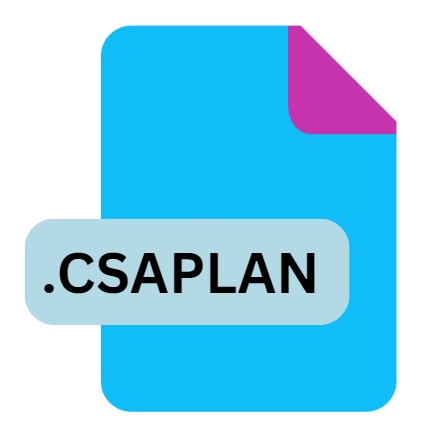.CSAPLAN File Extension

SPSS Analysis Plan File
| Developer | IBM |
| Popularity | |
| Category | Settings Files |
| Format | .CSAPLAN |
| Cross Platform | Update Soon |
What is an CSAPLAN file?
The .CSAPLAN file extension is associated with IBM’s Statistical Package for the Social Sciences (SPSS), a comprehensive software package used for statistical analysis in the social sciences.
The .CSAPLAN file, known as the SPSS Analysis Plan file, plays a critical role in managing complex data analysis workflows.
It is particularly useful in environments where statistical processes are standardized and repetitive, such as in academic research, government data analysis, and market research.
More Information.
Initially, the .CSAPLAN file was introduced as part of the SPSS’s suite to assist users in managing complex analysis plans without the need to manually repeat steps for each analysis.
Before the advent of this file type, users had to manually input commands for each analysis, which was not only time-consuming but also prone to errors.
The .CSAPLAN file addressed these challenges by allowing users to save a set of analysis procedures, parameters, and configurations within a single file.
This file could then be applied to any relevant dataset, ensuring consistency and efficiency in the analysis process.
The development of the .CSAPLAN file was also a response to the growing need for reproducibility in scientific research.
By saving the analysis plan, researchers could easily share their methodologies with others, facilitating peer review and replication of studies, which are fundamental aspects of scientific integrity.
Origin Of This File.
The .CSAPLAN file extension originated as part of SPSS’s initiative to streamline and automate statistical analysis. SPSS has been a cornerstone software for researchers since its inception in 1968 by Norman H.
Nie, C. Hadlai (Tex) Hull, and Dale H. Bent. Over the years, as the software evolved, so did its features, including the introduction of the .CSAPLAN file.
This file extension was developed to encapsulate the analysis plan for a dataset, ensuring that statistical procedures are applied consistently and reproducibly across different datasets or iterations of the same dataset.
File Structure Technical Specification.
The .CSAPLAN file is a structured file that contains the instructions and parameters for a specific set of analyses to be performed in SPSS. It typically includes:
- Analysis Procedures: This section details the specific statistical tests or procedures to be executed, such as t-tests, ANOVAs, regressions, or factor analyses.
- Parameter Settings: Parameters related to the analysis procedures, such as significance levels, variable transformations, and data weighting options, are stored within the file.
- Output Specifications: Instructions on how the output should be formatted, including which tables or graphs should be generated and how they should be presented, are also included.
- Linkages to Data: Although the .CSAPLAN file itself does not contain the data, it includes references to the dataset(s) to be analyzed, ensuring that the correct data is used during the execution of the plan.
In terms of its technical structure, the .CSAPLAN file is typically an XML-based file. XML (eXtensible Markup Language) allows for a structured and hierarchical representation of the analysis plan, making it both machine-readable and human-readable.
This format facilitates easy modification and customization of the analysis plan by users with basic XML knowledge.
How to Convert the File?
Converting .CSAPLAN files to other formats can be challenging due to their specific structure and purpose. There are a few approaches that users can take:
- Export to Syntax File (.SPS): Users can open the .CSAPLAN file in SPSS and export the analysis plan as an SPSS syntax file (
.SPS). The syntax file contains the SPSS commands needed to perform the analysis and can be modified or shared independently of the .CSAPLAN file. - Manual Conversion: For users who are familiar with XML and the structure of .CSAPLAN files, manual conversion to another XML-based format might be possible. However, this approach requires a deep understanding of both the .CSAPLAN structure and the target format.
- Third-Party Tools: Some third-party tools and scripts may be available that can assist in converting .CSAPLAN files to other formats, though these tools may not always be reliable or up-to-date.
Advantages And Disadvantages.
Advantages:
- Consistency: The .CSAPLAN file ensures that the same statistical procedures are applied consistently across different datasets or iterations of the same dataset. This reduces the risk of human error in the analysis process.
- Efficiency: By automating the analysis plan, users can save time that would otherwise be spent manually inputting commands for each analysis.
- Reproducibility: The .CSAPLAN file enhances the reproducibility of research by allowing researchers to easily share their analysis plans with others.
- Customization: Users can tailor the analysis plan to meet the specific needs of their research, including customizing parameter settings and output specifications.
Disadvantages:
- Learning Curve: For users unfamiliar with XML or the intricacies of SPSS, creating and modifying .CSAPLAN files can be challenging.
- Compatibility: The .CSAPLAN file is specific to SPSS, meaning that it cannot be used with other statistical software packages without conversion.
- Dependency on SPSS: Since the .CSAPLAN file is tightly integrated with SPSS, users are dependent on this software for executing their analysis plans, which may involve licensing costs.
How to Open CSAPLAN?
Open In Windows
- Install SPSS on your Windows machine.
- Open SPSS, and navigate to the file menu.
- Select “Open” and choose the .CSAPLAN file you wish to open.
- The file will load the analysis plan, and you can then proceed to execute or modify it within SPSS.
Open In Linux
- While SPSS is not natively available for Linux, users can use a virtual machine or compatibility layer like Wine to run the Windows version of SPSS.
- Once SPSS is running, the process for opening .CSAPLAN files is the same as for Windows.
Open In MAC
- Install SPSS for macOS.
- Similar to Windows, launch SPSS and use the “Open” option to select the .CSAPLAN file.
- The file will open in SPSS, allowing you to execute or adjust the analysis plan.












